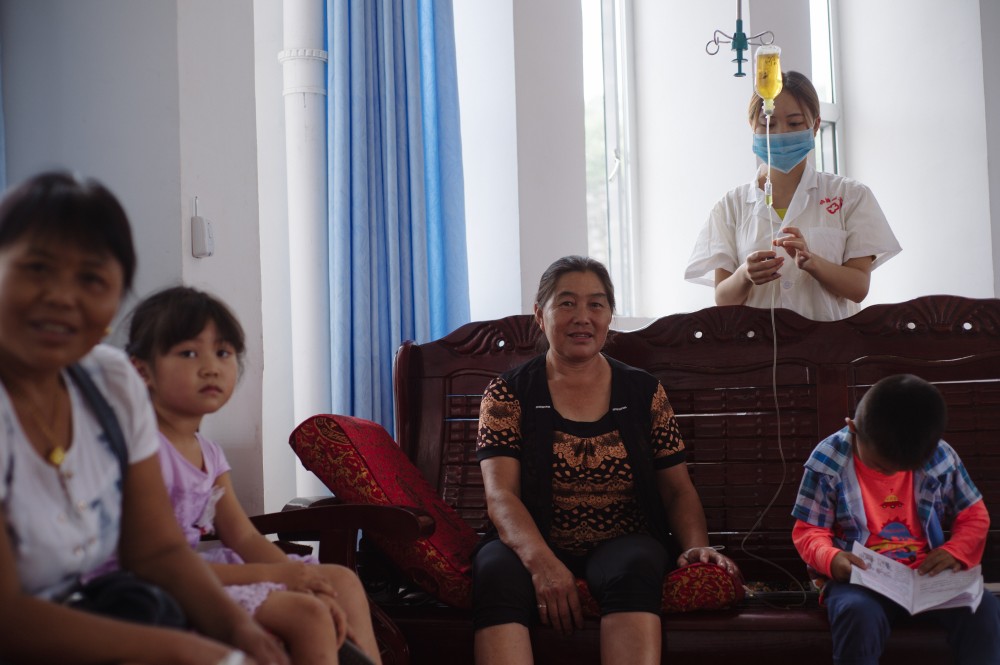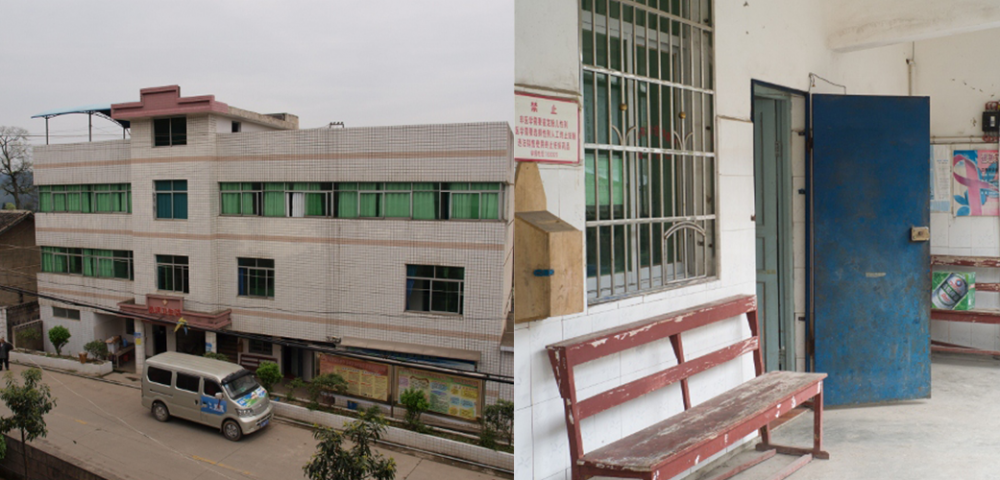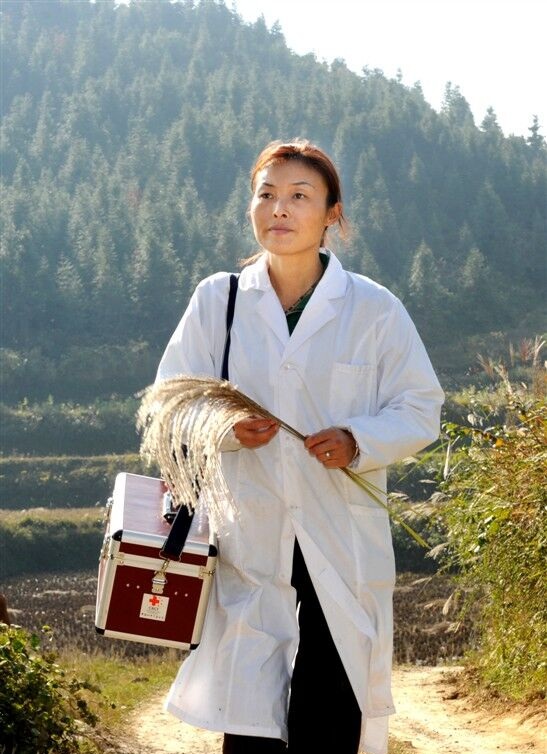

Poor farmers in China have been suffered from a vicious cycle of “Poverty brings illness; illness to poverty”. The Chinese government has launched a medical scheme targeting on newly developed farming villages in 2002, with a supporting budget of almost a hundred billion each year. Taking our serviced area - Baojing County in Hunan - as an example, up to 80% of the budget can reach the village participants.
China’s huge fund on the medical scheme can fully support the operation of the hospital. However, the income of doctors is linked to the profit of the hospital. Under the financial pressure and with economic incentive, different medical organizations become unscrupulous service providers. They earn money unethically without enhancing its quality of medical care and health care services. Villagers and even the upper class suffered; and farmers who lack education and knowledge were exploited seriously. Most of the medical organizations put their own interests before their patients. To earn more money, they offer unnecessary health checkups, medicines and treatments, instead of vital healthcare works such as education and promotion about epidemic disease prevention. At the same time, the government applies loose regulations on medical organizations, leading to the ineffective policy enforcement. Many studies show that although patients have received insurance compensation, they are still required to pay a unbelievably large amount of money for the medical services.
Our values
Three goals of Angdong Chartiy Hospital
Operating direction:
In the future, Angdong Charitable Hospital will focus on the provision of Chinese medical services and recovery treatment. We hope to further professionally develop these two aspects and provide quality service to the disabled and post-stroke patients. We plan to organize a comprehensive web among all hospitals in the county in order to extend the coverage of high-quality recovery treatment service provision.
Operation:
Located in Wanmibo Township, Baojing County, Xiangxi Tujia and Miao Autonomous Prefecture, Hunan, Angdong Charity Hospital is operated by the locals. At the same time, IRD participates in the operation as a consultant and works out the vision of charitable hospital:
In October 2002, the Chinese government announced the plan to restructure medical system of farming villages and proposed a county-based campaign called “New Rural Cooperative Medical Insurance”. Under this campaign, family participants are supported by the subsidy from the central government, the city government and the county government. At the beginning of the campaign, both the central government, the city, the county government offered RMB 10 as a subsidy to each family, which means that the participants were only required to pay RMB 10 as a contribution. As the government provided greater support later, in 2010, each participant could receive a subsidy of RMB 90; and their contributions increased to RMB 30 per year. These contributions allowed villagers to claim insurance for staying in different regional-level of hospitals. For example, in 2010, in most of the regions with regard to specific expenditure items, patients staying at a county-level hospital could claim for 40% to 60% of the total charge; and patients staying at a village-level health clinic could claim for a 70% to 80% of the total charge.
In March 2009, the State Council of the PRC published Opinions of the CPC Central Committee and the State Council on Deepening the Reform of the Medical and Health Care System, clearly addressed the opinion upon the medical and public health system, including vigorous criticization on aspects like “imbalance medical development between rural areas and cities and among different districts”, “improper resource allocation”, “weakly-built public health consciousness and medical work in rural areas and communities”, “flawed medical insurance system”, “unregulated drugs manufacturing process”, “insufficiency in hospital operation and management system”, “inadequate engagement from the government in public health”, “rapid rise of medical charge” and “heavy financial burden on individuals”. To make diagnosis and proper medical care more accessible and affordable to residents, the State Council proposed large-scale development on charitable medical services with relevant concessionary policies; promotion of charity through society forces; and donation to medical organizations.
The government encourages the development of charitable medical services. Angdong Charity Hospital is a good example to be greatly supported by the Baojing County government and Health Bureau.
 The original Angdong Charity Hospital
The original Angdong Charity Hospital
Angdong Charity Hospital is 15km away from the heart of the Baojing County with a higher transportation accessibility. The hospital provides medical services such as diagnosis, hospitalized service, childhood immunization, health checkups for children, females and the elderly and public health education for 12,000 villagers from 21 villages nearby. The 385 square feet 3-deck hospital was built in the 1950s. In the original design, it had 37 beds. It was also equipped with ultrasonic and electrocardiogram appliances. However, the staff dormitory is old and dilapidated now. Some examination rooms and wards are used as a dormitory room. In the hospital, there are only 4 beds left for the patients. Therefore, the Institute for Integrated Rural Development, Hong Kong (IRD) hopes to rebuild the hospital and reconstruct it into a charitable hospital.
 Dr. Tian Rui, Director of the Hospital
Dr. Tian Rui, Director of the Hospital
Dr. Tian was born in a Tu Minority family. She was a village doctor. She is well known for her kindness and professionalism. She has won the Hunan Outstanding Village Doctor Award and has represented the Hunan province to go to Beijing and meet Ms. Wu Yi, the Vice Premier and Mr. Gao Qiang, the Ministry of Health. She used to play an important role in IRD Public Health Service Team. In 2005, IRD Public Health Service Team toured number of remote poor villages in Baojing County and provided free diagnosis and public health education. After that, Dr Tian was invited by the government to join the Angdong Public Health Centre(昂洞鄉衛生院), and in 2010 was appointed as the medical superintendent of the hospital. She always wishes to build a charitable hospital and knows the work of IRD very well.
Consultancy
A consultant council is formed by the medical professionals and management elites from Hong Kong and the trustworthy scholars and representatives from the medical sector from China. The council is responsible for monitoring the organization management, administration, finance and human resource of the hospital. The council also examines and comments on the daily operation process and forms teams to draft working guides. The teams also monitor and assist in the working process. Members of the consultant council are as follows:
|
Consultants from Hong Kong |
|
|
Dr. Wong Hon Kwong |
Former Vice-Hospital Chief Executive & Chief of Service (Obstetrics & Gynaecology), Queen Elizabeth Hospital
|
|
Dr. Chow Chun Bong |
Former Consultant (Paediatrics & Adolescent Medicine), Princess Margaret Hospital |
|
Mr. Wan Chi Keung (BBS, JP) |
Convenor, Risk Communication Advisory Group, Centre for Health Protection |
|
Mr. Leung Po Lam |
Chairman, Hong Kong Social Security Society |
|
Mr. Lui Ping Keung |
Guest Lecturer, The Chinese University of Hong Kong |
|
Mrs Chan Kung Wai Ying |
Former Head, China Affairs Department, Hospital Authority |
|
Consultants from China |
|
|
Prof. Yang Tuan |
Researcher, Center for Public Policy Research, Chinese Academy of Social Sciences |
|
Prof. Yei Jing Yi
|
Professor, Peking University Law School |
Rural Urban Framework of HKU Faculty of Architecture
The new building of the Angdong Charity Hospital is designed by the professors from the Faculty of Architecture of the University of Hong Kong, who are responsible for Rural Urban Framework (RUF). RUF is a campaign targeting the architectural projects of various regions in Hong Kong and China. The design focuses on the combination and balance between practicality and innovativeness, and allows the expanded hospital to echo with its charitable purpose and keep the close-to-nature culture of farming villages. The project directors are Dr. Lam and Dr. Joshua Bolchover, Associate Professors of the Faculty of Architecture who have received many international awards. During the reconstruction, the campaign sent professionals to monitor the working progress and quality monthly.
1. Reconstruction of Angdong Public Health Centre
In June 2011, the centre worked with IRD to set up a working group consisting of health-service and management professionals from mainland and Hong Kong. They seized the opportunity to expand the centre and turned it into charity-based hospital. The hospital is determined to work on the welfare and well-being of the poor and the weak.
Angdong Charitable Hospital is designed by two architects in HKU’s ‘Rural Urban Framework’, Mr. John Lin and Mr. Joshua Bolchover. Both John and Joshua have been active in various community development projects in Hong Kong and rural mainland over the years.
In order to integrate the charitable hospital with the local traditional building style, and embrace ecological and self-sustainability, the new building made good use of the blue bricks from demolished buildings; the sloping-wall-design prevents medicines from direct sunlight; tailor-made hollow bricks were made for the corridors to allow more sunlight and better ventilation. More amazingly, with the change of light in the morning, afternoon and evening, it will project different shadow patterns onto the floor. On the other hand, there is a step-free passage run through all floors in the medical building which allows better accessibility for all patients. Moreover, villagers are welcome to use the atrium and roof-top. Now, the hospital is redefined as a public building for all, with innovativity and practicality.
Angdong Charitable Hospital has won many awards since commencement:
|
Completion Date |
April, 2014 |
|
Design Highlights: |
People Oriented Step-free design Close to local ecology Semi-open Wards Atrium and roof as public space Hollow bricks to create unique light effect |
|
Architectural Design |
Urban Rural Framework, Faculty of Architecture, the University of Hong Kong |
|
Project Manager |
Maggie Ma @ Domat |
|
Awards |
• Awards for International Excellence, Royal Institute of British Architects (2016) • Curry Stone Design Prize, Chicago Architecture Biennial (2015) • Social Equality Award, WA Awards for Chinese Architecture (2014) |
At the of 2016, Angdong Charitable Hospital was elected as one of the 21 best international architectures by the Royal Institute of British Architects and became the centre of community building.
2. Angdong Health and Life Exhibition Centre
The Angdong Health and Life Exhibition Centre, established under the collaboration of IRD and the hospital, commenced service since early November 2017. IRD joins hands with the hospital, in organising various trainings, rural hygiene exhibitions and community health education activities. We hope to promote the importance of healthy lifestyle to the locals through interactive and innovative ways.
The centre aims to deliver a healthy life message through interacting with visitors. It devided as a few area, they are,
3. Promoting Rehabilitation and Chinese Medicine Service
In order to fulfil the needs of rehabilitation after critical illness, stroke or physical disability and Chinese medicine, the medical centre is now furnished with proper rehabilitation equipment and other medical equipment. Patient can receive quality rehabilitation training in the centre and better treatment. In addition, the centre also provides home-visit service of rehabilitation treatment and training and make necessary barrier-free transformation (e.g. installing steel handrails). Meanwhile, it also guides and instructs caregivers so as to strengthen the patients’ self-care ability and ease caregivers’ stress.